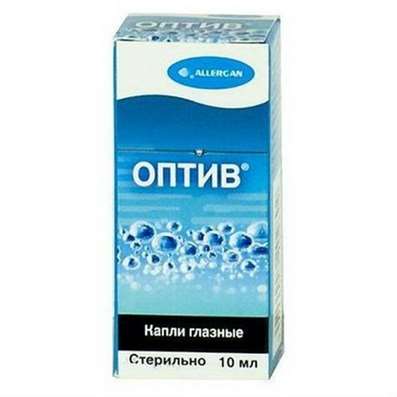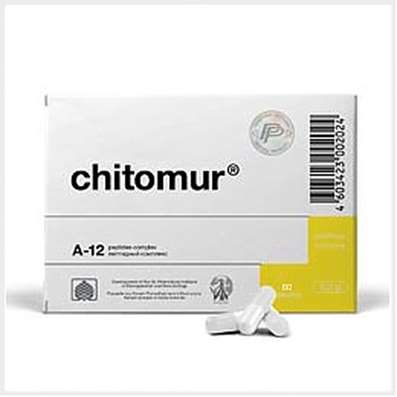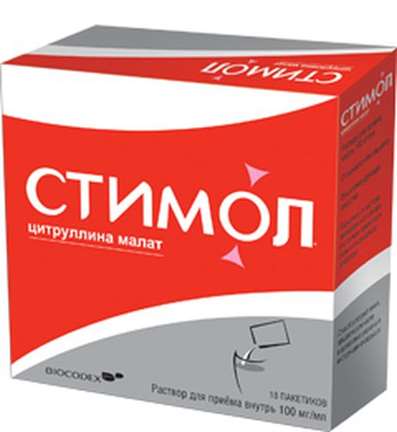Instruction for use: Cerebrum compositum N
I want this, give me price
Pharmacological group
Homeopathic Remedies
Nosological classification (ICD-10)
D84.9 Immunodeficiency, unspecified
Pneumonia in immunodeficiency states, Autoimmune disease, Autoimmune diseases, Significant immunodeficiency, Immune Deficiency, Immunodeficiency, Immunodeficiency diseases, Immunodeficiency conditions due to surgical intervention, Immunocorrection for cancer, Immunomodulation, Infections in Patients with Weakened Immunity, Correction of immune deficiency, Correction of immunodeficiency states, Correction of weakened immunity, Correction of weakened immunity in immunodeficient states, Impaired immunity, Infringement of the immune status, Impaired immune system, Primary immunodeficiency, Maintenance of immunity, Reduction of protective forces, Decreased immunity, Decreased immunity for colds and infectious diseases, Decreased immune status, Reduced resistance to infectious diseases, Reduced resistance to infectious and catarrhal diseases, Reduced resistance of the body, Low immunity, Predisposition to colds, Acquired immunodeficiency, Radiation immunodeficiency, Development of immunodeficiency, The syndrome of immune dysfunction, Immunodeficiency Syndrome, Syndrome of primary immunodeficiency, Reduction of body defenses, Decreased immunity, Decreased body immune defense, Decreased local immunity, Decrease in the total body resistance, Reduction of cellular immunity, Reduced resistance to infections in children, Decreased body resistance, Reduced body resistance, Reduced immunity, The state of immunodeficiency, Stimulation of the processes of nonspecific immunity, Severe secondary selective immunodeficiency, Inhibition of immunity, Primary immunodeficiency states
F90.0 Violation of activity and attention
Hyperactive Child Syndrome, Children's attention deficit disorder, Hyperkinetic Impulse Syndrome,m Attention Violation with Hyperactivity, Attention deficit, Children's attention deficit, Difficulty concentrating, Attention concentration decrease, Violation of attention, Disturbance of concentration, Infringement of concentrating ability, Violation of mental activity, Violation of the ability to concentrate, Impairment of the ability to concentrate, Violations of attention, Inability to concentrate, Weakening of attention, Weakening the ability to concentrate, Decrease the ability to concentrate, Reduced concentration of attention, Attention disorders, Attention breakdown, Attention Deficit Hyperactivity Disorder, Deterioration of attention, Reducing concentration, Reducing the ability to concentrate
G93.4 Unspecified encephalopathy
Bilirubin encephalopathy, Lacunar status, Tremor in portal-systemic encephalopathy, Latent hepatic encephalopathy, Atherosclerotic encephalopathy, Hypertonic encephalopathy, Hypoxic encephalopathy, Dysmetabolic encephalopathy, Encephalopathy,Defeat of the brain, Porto-caval encephalopathy, Vascular encephalopathy, Traumatic encephalopathy, Encephalopathy, Encephalopathy of secondary origin, Encephalopathy dyscirculatory, Encephalopathy portocaval, Epileptic encephalopathy, Syndrome of hemorrhagic shock and encephalopathy, Subacute spongiform encephalopathy
R41.3.0 * Memory reduction
Memory decrease, Memory malfunction, Memory attenuation, Memory impairment, Forgetfulness, Impaired memory, Memory impairment in elderly patients, Memory impairment, Deteriorating memory of recent events
Composition
Homeopathic injection 1 amp. (2.2 ml)
Active substances:
Cerebrum suis (cerebrum suis) D8 22 μl
Embryo totalis suis (embryo totalis suis) D10 22 μl
Hepar suis (hepar suis) D10 22 μl
Placenta totalis suis (placenta totalis suis) D10 22 μl
Kalium phosphoricum (potassium phosphoricum) D6 22 μl
Selenium (selenium) D10 22 μl
Thuja occidentalis (Thuja) (Thuja occidentalis (Thuja) D6 22 μl
Strychnos ignatii (Ignatia) (strychnos of ignatii (ignatiya) D8 22 μl
Bothrops lanceolatus (botrops lanceolate) D10 22 μl
Acidum phosphoricum (Acidum phosphoricum) D10 22 μl
Chinchona pubescens (China) (cynchona pobescens (china) D4 22 μl
Sulfur (Sulfur) D10 22 μl
Kalium bichromicum (potassium bichromicum) D8 22 μl
Gelsemium sempervirens (Gelsemium) (Gelsemium sempervirens (Gelsemium) D4 22 μl
Ruta graveolens (Ruta) (rue gravelens (rue) D4 22 μl
Arnica montana (Arnica) (arnica montana arnica) D28 22 μl
Aesculus hippocastanum (Aesculus) (esculus hippocastanum (esculus) D4 22 μl
Manganum phosphoricum (manganum phosphoricum) D8 22 μl
Magnesium phosphoricum (magnesium phosphoricum) D10 22 μl
Semecarpus anacardium (Anacardium) (semecarpus anacardium (anacardium) D6 22 μl
Conium maculatum (Conium) (conium maculatum (conium) D4 22 μl
Medorrhinum-Nosode (medorinum nosode) D13 22 μl
Hyoscyamus niger (Hyoscyamus) (chioccyamus niger (chioccyamus) D6 22 μl
Aconitum napellus (Aconitum) (aconitum napellus (aconitum) D6 22 μl
Anamirta cocculus (Cocculus) (anamyrte cocculus (cocculus) D4 22 μl
Ambra grisea (Ambra) (ambergris ambergris (amber)) D10 22 μl
Auxiliary substances: sodium chloride for determination of isotonia - about 9 mg / ml; Water for injection - up to 2.2 ml
Description of dosage form
Colorless transparent liquid, odorless.
pharmachologic effect
Pharmacological action - homeopathic.
Pharmacodynamics
A multicomponent homeopathic preparation, the effect of which is due to the components that make up its composition.
indications
Encephalopathy of various genesis (memory disorder, attention);
Stimulation of regeneration processes and nonspecific immunity.
Contraindications
Increased individual sensitivity to the components of the drug;
Known hypersensitivity to quinine;
Children under 18 years of age (due to lack of clinical data).
pregnancy and lactation
Use of the drug is possible if the expected benefit for the mother exceeds the potential risk to the fetus and the baby. Consultation of the doctor is necessary.
Side effects
Allergic reactions are possible, incl. Skin allergic reactions. With known individual sensitivity to plants of the family of Compositae, reactions of increased sensitivity (including anaphylactic reaction) may occur. The temporary appearance of redness, swelling and pain at the injection site. In very rare cases, after taking medications containing quinine, skin allergic reactions or febrile conditions (hypersensitivity reactions) can be observed. If side effects occur, stop taking the medication and consult a doctor.
Interaction
The use of homeopathic drugs does not exclude the treatment of other drugs.
Dosing and Administration
P / k, in / m, in / to - 1 amp. (2.2 ml) 1-3 times a week. The course of treatment - 4-6 weeks. Possible repeated courses of treatment after agreement with the attending physician.
Opening of the ampoule. The contents in the ampoule head should be shaken off by tapping lightly (the colored dot should be at the top). After that, the upper part of the ampoule is broken off by pressing at the point of application of the color point.
Overdose
Cases of overdose have not been registered to date.
special instructions
When taking homeopathic medicines, the existing symptoms may temporarily worsen (primary deterioration). In this case, stop using the drug and consult your doctor.
Influence on the ability to drive vehicles and work with machinery. The drug does not affect the performance of potentially hazardous activities requiring special attention and quick reactions (driving and other vehicles, working with moving mechanisms, the work of a dispatcher and operator, etc.).
Form of issue
Homeopathic solution for injections. 2.2 ml each in ampoules of colorless glass of hydrolytic class I. Each notch is marked with a notch and a colored dot. At 5 amp. Placed in an open plastic contour mesh package. For 1 or 20 open plastic contour mesh (5 or 100 amp) packages are put in a cardboard box.
Terms of leave from pharmacies
On prescription.
Storage conditions
In dry, the dark place at a temperature of 15-25 ° C.
Keep out of the reach of children.
Shelf life
5 years.
Do not use after the expiry date printed on the package.

 Cart
Cart





